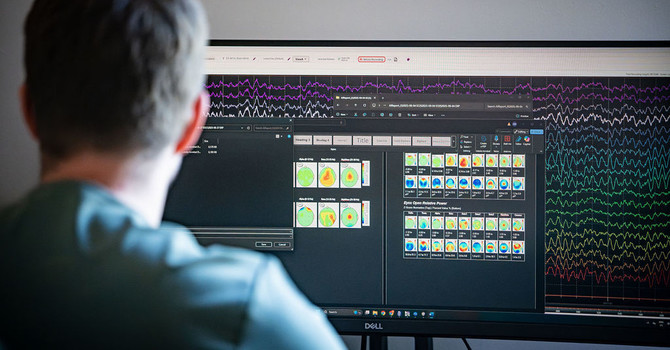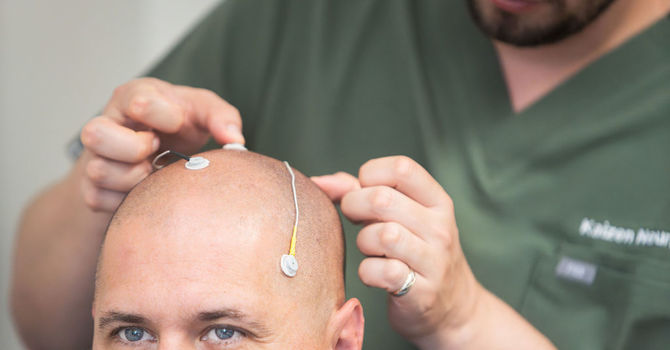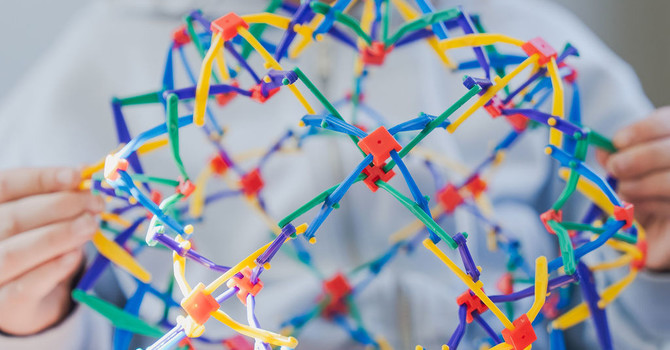
Neurofeedback for Treating Anxiety and Depression:
Anxiety and depression represent two of the most prevalent mental health conditions worldwide, often requiring comprehensive treatment approaches that address both psychological and neurobiological factors [1]. Traditional treatments, while effective for many patients, leave substantial numbers without adequate symptom relief, driving interest in innovative therapeutic modalities [2]. Neurofeedback, a non-invasive brain training technique that allows individuals to self-regulate their neural activity through real-time feedback, has emerged as a promising intervention for both anxiety and depression [3]. This comprehensive review examines the current state of peer-reviewed research on neurofeedback interventions for anxiety and depression, with particular emphasis on infra-low frequency (ILF) neurofeedback approaches.
Understanding the Neurobiological Basis of Anxiety and Depression
Both anxiety and depression involve complex dysregulation of brain networks responsible for emotional processing, attention, and self-regulation [4]. Research has consistently identified key neural signatures associated with these conditions, including altered frontal alpha asymmetry patterns, where anxiety typically involves increased right compared to left frontal activity, while depression shows reduced left compared to right frontal activity [5]. Additionally, both conditions demonstrate dysregulated activity within critical brain networks including the default mode network (DMN), central executive network (CEN), and salience network [6].
Electroencephalographic studies reveal distinct brainwave abnormalities in anxiety and depression, including elevated beta activity, reduced alpha power, and altered theta rhythms [7]. These neurobiological alterations provide the theoretical foundation for neurofeedback interventions, which aim to directly target and modulate specific patterns of brain activity associated with symptom presentation [1].
Meta-Analytic Evidence for Neurofeedback in Depression
Multiple comprehensive meta-analyses have demonstrated the effectiveness of neurofeedback for treating depression. A 2024 meta-analysis of 22 studies investigating neurofeedback interventions for major depressive disorder revealed significant improvements across multiple domains [2]. The analysis found that neurofeedback intervention had a significant impact on depression symptoms with a Hedges' g effect size of -0.600, representing a moderate to large effect [2]. Neurophysiological outcomes showed even stronger effects with a Hedges' g of -0.726, while neuropsychological function demonstrated moderate improvements with an effect size of -0.418 [2].
Another comprehensive meta-analysis specifically examining bio- and neurofeedback for depression found significant within-group effects with a Hedges' g of 0.717, while between-group analyses yielded an effect size of 1.050 [1]. Importantly, moderator analyses indicated that treatment efficacy was only significant when accounting for experimental design, favoring randomized controlled trials over non-RCT designs [1].
A focused meta-analysis examining neurofeedback's effect on depression reported a large effect size (g = -0.91) for depression reduction [4]. This substantial effect size provides strong support for neurofeedback as either a complement to pharmaceutical treatment or potentially as a standalone therapy [4].
Neurofeedback Approaches for Anxiety Disorders
Research on neurofeedback for anxiety disorders has demonstrated consistently positive outcomes across multiple treatment protocols. A systematic review of EEG neurofeedback for anxiety disorders and post-traumatic stress disorders found that anxiety-related brain over-arousal can be effectively modulated through neurofeedback training [8]. The manifestations of anxiety disorders are associated with dysfunctions of neurophysiological stress axes and brain arousal circuits, which represent important targets for neurofeedback interventions [8].
Alpha-Based Protocols for Anxiety
Alpha enhancement neurofeedback has shown particular promise for anxiety treatment. A randomized clinical trial published in Brain and Behavior demonstrated that neurofeedback training focusing on alpha activity in the parietal lobe was effective in treating generalized anxiety disorder [9]. Twenty-six female participants with GAD were randomly assigned to either left parietal lobe or right parietal lobe training groups, undergoing ten 40-minute sessions [9]. Both groups showed significant decreases in anxiety scores after training, with improvements maintained at four-week follow-up [9].
Research has consistently shown that when healthy adults are at rest, the dominant EEG rhythm is alpha, which is associated with a calm, relaxed state [9]. High alpha power has been linked to mindfulness and may denote a relaxed state of alertness, while anxiety correlates with attenuated alpha activity [9]. In highly anxious individuals, increasing alpha magnitude can have a calming effect [9].
Frontal Alpha Asymmetry Training
Frontal alpha asymmetry neurofeedback represents one of the most extensively studied approaches for anxiety treatment. A controlled study involving 32 right-handed females randomly assigned to receive either frontal alpha asymmetry training or active control training demonstrated significant clinical benefits [5]. The asymmetry group showed an increase in alpha asymmetry driven by higher alpha at the right site, as well as coherent reductions in both negative affect and anxiety symptoms from pre- to post-training [5].
The mechanism underlying frontal alpha asymmetry training involves modulating the balance between approach and withdrawal motivation systems in the brain [5]. Research has shown that frontal alpha asymmetry can be effectively modified through neurofeedback, with changes being frequency and location specific [11]. However, the durability of these changes varies, with some studies showing effects that return to baseline within weeks, while others demonstrate more sustained improvements [11].
Beta-Based Neurofeedback Protocols
High beta down-training neurofeedback has emerged as an effective approach for treating anxiety and depression, particularly in patients with comorbid presentations. A study of 87 patients with major depressive disorder and anxiety symptoms compared alpha-asymmetry neurofeedback (ALAY) with high-beta down-training (Beta) neurofeedback [12]. Both neurofeedback groups received ten sessions and showed decreased symptoms of depression and anxiety, with the Beta group being more effective in decreasing high-beta power at the parietal cortex [12].
Research on high beta down-training protocols has demonstrated the trainability, independence, and interpretability of these approaches [13]. A study of 23 patients with comorbid major depressive disorder and anxiety symptoms undergoing high beta down-training revealed learning curves of reduced high beta activity, with decreased high beta activity positively correlated with decreased severity of depression, especially cognitive depression symptoms [13].
A pilot study examining neurofeedback beta down-training in women with high state-trait anxiety found significant reductions in anxiety scores following five neurofeedback sessions [14]. The study observed statistically significant decreases in both beta and high-beta patterns in the temporal lobes, providing neurophysiological evidence for the training's effectiveness [14].
Quantitative EEG-Based Neurofeedback
Quantitative EEG (qEEG)-based neurofeedback represents a personalized approach that tailors treatment protocols to individual brain activity patterns. A quasi-experimental study with 29 college students with generalized anxiety disorder compared qEEG-based neurofeedback therapy with a control group [6]. The intervention group received 20 sessions of qEEG-based neurofeedback over 8 weeks, while the control group received no intervention [6].
Results demonstrated significant improvements in anxiety, depression, and emotion regulation that were maintained at three-month follow-up [6]. The partial eta squared value showed that 81% of variations in anxiety and 44% of variations in depression were explained by the qEEG-based neurofeedback therapy [6]. Additionally, 70% of variations in emotion regulation were explained by the intervention [6].
The qEEG approach allows for identification of specific brain network abnormalities and targeted interventions. Research has shown that three essential brain networks - the default-mode network, central executive network, and salience network - play coordinating roles in emotion regulation processes [6]. These networks regulate brain functions to work optimally, and qEEG-based neurofeedback can enhance their coordination and functionality [6].
Z-Score Neurofeedback Approaches
Z-score neurofeedback represents an advanced approach that compares individual brainwave patterns to normative databases and provides real-time feedback to normalize atypical patterns. A study examining standardized weighted low-resolution electromagnetic tomography Z-score neurofeedback (swLZNFB) in 48 patients with major depressive disorder comorbid with anxiety symptoms found significant clinical improvements [15].
Ten sessions of swLZNFB reduced clinical symptoms and atypical brain activities, with decreased scores on depression and anxiety measures [15]. The intervention also produced changes in deep brain activities, including decreased current source density of beta frequencies in the prefrontal cortex, anterior cingulate cortex, posterior cingulate cortex, and amygdala [15]. These neurophysiological changes accompanied the clinical improvements, providing evidence for the intervention's neurobiological mechanisms [15].
Infra-Low Frequency Neurofeedback: A Comprehensive Examination
Infra-Low Frequency (ILF) neurofeedback represents the most recent advancement in neurofeedback technology, targeting brain rhythmic activity below 0.1 Hz [16]. Unlike traditional neurofeedback that focuses on frequencies in the 8-25 Hz range, ILF training addresses the slowest oscillations in the brain, which appear to play a fundamental role in brain regulation and organization [16].
Neurobiological Mechanisms of ILF Neurofeedback
The discovery of preferential training frequencies outside of obvious alpha rhythms led to the identification of optimal response frequencies (ORF) across the broader EEG spectrum, eventually leading to entry into the infra-low frequency regime [16]. ILF training operates through a fundamentally different mechanism than traditional neurofeedback, characterized by the absence of discrete reinforcers and utilizing a waveform-following approach [16].
Research has demonstrated that ILF rhythms play a higher-order role in the self-organization and regulation of the central nervous system [16]. A convergence is becoming apparent between clinical findings based on ILF neurofeedback and neurological studies showing associations between slow brain activity fluctuations and various neurophysiological processes, including heart-rate variability, blood pressure, oxygenation, and cortical excitability [16].
Functional MRI studies have provided insight into ILF neurofeedback's mechanisms of action. A study examining fMRI patterns following a single ILF session in 27 healthy subjects found increased connectivity between key regions of the salience, language, and visual networks [16]. This suggested functional integration of large-scale brain networks involved in sensory processing [16]. In contrast, the sham-neurofeedback control group showed no such increase in brain connectivity [16].
ILF Neurofeedback for Depression
Research on ILF neurofeedback for depression has shown promising results across multiple studies. A case series examining three unmedicated depressed individuals who participated in ILF neurofeedback training demonstrated remarkable outcomes [17]. After 20 sessions of 30-45 minutes each, all three participants exhibited improvement in mood and self-organization skills, decreased anxiety, and increased emotional stability and resilience [17].
Quantitative measures revealed that depression profile scores improved by at least 90% in two cases and at least 70% in the third case [17]. Importantly, the improvements were stable for one year after beginning ILF neurofeedback therapy [17]. Neurophysiological changes accompanied the clinical improvements, with significant decreases in theta activity over frontal and central areas in passive states [17].
A more comprehensive study examining ILF neurofeedback effects on brain functional state in healthy and depressed individuals found significant changes after 20 sessions of training [18]. Depressed participants reported remarkable improvement in mood and emotional stability, decreased anxiety levels, and increased concentration and mental performance [18]. Post-treatment depression rating scales revealed dramatic decreases in depression scores to normal ranges [18].
The neurophysiological mechanisms underlying ILF neurofeedback's antidepressant effects appear to involve normalization of frontal cortical activation patterns [18]. Correlation between clinical symptom remission and positive changes in brain wave activity suggests that ILF neurofeedback promotes functional recovery in frontal brain regions [18].
ILF Neurofeedback for Anxiety and Emotional Regulation
ILF neurofeedback has demonstrated particular effectiveness for anxiety-related conditions and emotional dysregulation. A pilot study examining ILF neurofeedback in nine females aged 52 ± 7 years with subclinical signs of emotional dysregulation, including anxiety, mild depression, and somatoform symptoms, provided insights into the intervention's mechanisms [19].
After 15 sessions of training, participants showed increased connectivity in regions including the bilateral temporal fusiform cortex, right supplementary motor area, left amygdala, left temporal pole, and cerebellum [19]. Network-based statistical analysis revealed an extended network including temporal and occipital fusiform cortex, multiple visual cortex areas, posterior superior temporal sulcus, amygdala, temporal poles, superior parietal lobule, and supplementary motor cortex [19].
Clinically, significant decreases in alexithymia, depression, and anxiety levels were observed [19]. The changes in brain connectivity were accompanied by improved emotional regulation, with participants showing enhanced ability to process social stimuli and manage emotional responses [19]. The study suggested that ILF neurofeedback has therapeutic potential for individuals with alexithymia and related emotional regulation difficulties [19].
ILF Neurofeedback Protocol Characteristics
ILF neurofeedback protocols differ significantly from traditional neurofeedback approaches. The training utilizes both conventional EEG frequencies (1-40 Hz) and activities in the slow cortical potential range below 0.1 Hz [20]. Electrode placement follows individual criteria based on the patient's arousal level and mental strength, typically starting with T4-P4 and T4-Fp2 placements [17].
The training protocol is characterized by continuous feedback through audio-visual computer animations with game-like characteristics [21]. Unlike traditional neurofeedback where patients actively attempt to control their brainwaves, ILF training requires no intentional effort from participants [21]. The system operates through a complex multifrequency band algorithm that follows the individual's regular EEG activity pattern with thresholds that reset moment-to-moment [21].
Success rates are maintained at approximately 95% through automatic threshold adjustments, allowing the brain to naturally regulate itself without conscious effort [21]. This approach reflects recognition that ILF training operates through different mechanisms than operant conditioning models used in traditional neurofeedback [21].
Clinical Effectiveness and Applications
ILF neurofeedback has demonstrated effectiveness across a wide range of conditions beyond anxiety and depression. Clinical reports indicate that ILF training can yield substantial improvements in 20-40 sessions, with some patients showing rapid responses [21]. The intervention has shown effectiveness for ADHD, autism, various forms of anxiety, sleep disturbances, migraines, addictive disorders, post-traumatic stress symptoms, irritability, and bipolar disorders [21].
A systematic mixed studies review examining ILF neurofeedback across multiple conditions found positive effects for a wide variety of symptoms and general favorable effects on wellbeing [16]. The wide application and versatility of ILF neurofeedback may suggest a general, non-specific mechanism of action toward stress reduction and improved brain modulation [16].
Research on therapeutic effectiveness has shown that ILF neurofeedback benefits are significantly correlated with individualization of protocols [16]. This presents challenges for standard research designs, as researchers must balance maximizing therapeutic effectiveness through individualization while maintaining research validity and replicability [16].
Clinical Implementation and Treatment Considerations
Session Parameters and Treatment Duration
Neurofeedback protocols for anxiety and depression vary considerably in session frequency, duration, and total treatment length. Most successful EEG-based protocols involve 10-30 sessions delivered over 8-20 weeks [1][2]. Weekly sessions of 20-45 minutes duration appear optimal for most approaches, though some protocols utilize more intensive schedules [6].
ILF neurofeedback typically requires 20-40 sessions for optimal results, with some patients showing improvement within the first few sessions [21]. The individualized nature of ILF protocols allows for real-time adjustments based on patient response, potentially reducing the total number of sessions required [16].
Research has consistently shown that longer intervention lengths are associated with better outcomes for depressive symptoms and neuropsychological function [2]. However, surprisingly, shorter neurofeedback sessions have been associated with improvements in neurophysiological outcomes, suggesting that session duration optimization may depend on the specific target measures [2].
Safety Profile and Side Effects
Neurofeedback demonstrates an exceptionally favorable safety profile across all protocols examined [22]. Clinical trials consistently report minimal adverse events, with the most commonly reported side effects being mild and temporary, including headaches, fatigue, nausea, and drowsiness [22]. These effects generally do not lead to withdrawal from therapy except in rare cases [22].
ILF neurofeedback shows particularly minimal side effects, with mild fatigue, headache, and dizziness appearing rarely [21]. The passive nature of ILF training, where patients require no active effort, may contribute to its excellent tolerability profile [21].
A randomized controlled study of healthy volunteers found that most participants reported some transient adverse effects within the first six or seven sessions, typically resolving within a few days [22]. The most frequent effects included temporary intensification of previously problematic symptoms, pressure in the head, dizziness, or physical discomfort [22].
Individualization and Protocol Selection
The effectiveness of neurofeedback interventions, particularly ILF approaches, appears significantly enhanced through individualization of treatment protocols [16]. Research demonstrates superior treatment outcomes when protocols are tailored to each individual's unique nervous system characteristics rather than using standardized approaches [16].
qEEG-based approaches allow for identification of specific brain activity patterns and targeted interventions [6]. This personalized approach enables clinicians to address individual neurophysiological abnormalities while optimizing treatment effectiveness [6].
The search for individual optimal response frequencies (ORFs) has become a cornerstone of advanced neurofeedback practice [16]. Clinical trials show that individualized protocols based on ORF discovery produce superior treatment outcomes compared to standardized frequency protocols [16].
Future Research Directions and Clinical Implications
Mechanistic Understanding
Future research should focus on clarifying the specific mechanisms by which different neurofeedback approaches produce therapeutic benefits in anxiety and depression [1][2]. This includes investigating the relationship between successful neural regulation during training sessions and subsequent symptom improvement, as well as identifying optimal brain targets for different presentations [23].
The integration of advanced neuroimaging techniques with real-time feedback offers opportunities to better understand treatment mechanisms [23]. Studies combining EEG and fMRI neurofeedback may provide more comprehensive insights into the neural networks involved in therapeutic change [24].
Large-Scale Clinical Trials
The field requires larger, well-powered randomized controlled trials with appropriate control conditions and longer follow-up periods [1][2]. Such studies should compare neurofeedback directly to established treatments and examine its effectiveness as both standalone and adjunctive interventions [22].
Multi-site trials would enable investigation of protocol generalizability and clinician training requirements [16]. Cost-effectiveness analyses are also needed to support clinical implementation and healthcare policy decisions [22].
Clinical Recommendations and Implementation
Based on current evidence, neurofeedback appears to be a promising intervention for anxiety and depression, particularly when implemented as part of comprehensive treatment approaches [1][2]. The technique may be especially valuable for individuals who have not responded adequately to conventional interventions, those who experience significant side effects from medications, or individuals who prefer non-pharmacological approaches [22].
ILF neurofeedback shows particular promise due to its individualized approach, minimal side effects, and broad applicability across various conditions [16][21]. Clinicians considering ILF neurofeedback should ensure adequate training in protocol selection and real-time adjustments based on patient response [16].
The evidence strongly supports neurofeedback as an effective intervention for both anxiety and depression, with effect sizes comparable to established treatments and superior tolerability profiles [1][2][4]. As research methodology continues to improve and protocols become standardized, neurofeedback is likely to emerge as a valuable addition to the therapeutic armamentarium for mood and anxiety disorders.
The field shows particular promise for addressing significant treatment gaps that exist for individuals with treatment-resistant presentations [22]. The combination of neurobiological targeting, personalized protocols, and excellent safety profiles positions neurofeedback as an important complement to existing evidence-based treatments for anxiety and depression [6].






